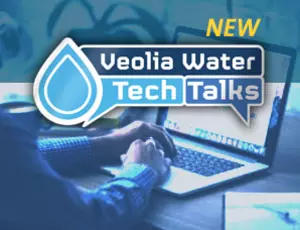The salt industry relies on evaporators and crystallizers to produce many varieties of salt including food grade, chlor-alkali, and other chemical grade salts.
Veolia Water Technologies has numerous systems operating successfully around the globe utilizing HPD Crystallization. These include the largest multiple-effect evaporative salt plant and the three, largest MVR single-stage, evaporative salt plants in the world.
Total Project Capabilities
Veolia has successfully designed and built several of the world's largest salt facilities on a full turnkey basis. All aspects of the project from analytical and pilot-testing to effective project management account for the expert execution and successful commercial operation of installations worldwide.
Veolia provides both batch or continuous pre-treatment processes to provide a high-purity feedstock for chlor-alkali, chemical- grade, pharmaceutical, or food-grade salts.
Whether expanding an existing facility, building a new plant or treating a sodium chloride sidestream, HPD crystaliization technology is proven in the industry with guarantees on system availability, superior production rates, and product purity.
Chemical Salts Experience
|
Sodium chloride (NaCl) |
Potassium chloride (KCl) |
Sodium carbonate (Na2CO3) |
|
Sodium sulfate (Na2SO4) |
Lithium chloride (LiCl) |
Sodium chlorate (NaClO3) |
|
Ammonium sulfate ((NH4)2SO4) |
Potassium sulfate (K2SO4) |
Calcium chloride (CaCl2) |
|
Potassium nitrate (KNO3) |
Ammonium molybdate ((NH4)2MoO4) |
Copper sulfate (CuSO4) |
|
Sodium bicarbonate (NaHCO3) |
Sodium metabisulfate (Na2S2O5) |
Ammonium metavanadate (NH4VO3) |
Salt Plant Performance Modifications for US Salt
The Client's Needs
US Salt desired a repair-renewal and capacity expansion of its four-body multiple effect “vacuum pan” salt crystallizer system. Worn metal that had served 55 years needed attention. Disruptions to salt production had to be avoided while modifications were made.
The Solution
Veolia Water Technologies, after a full evaluation of the system, designed and implemented several changes based on HPD™ salt crystallizer installation experience. The main changes were to the nozzles and pipe in the circulating flow-circuit. The former tangential -entry nozzle was replaced with Veolia’s Karoly™ nozzle proprietary radial-entry design. The new return-entry was designed to prevent salt clumping.
Another improvement was in adopting the method of purging contaminants, using HPD’s Purge Cylinder approach. Worn cone-bottoms were reinforced and thinned metal was replaced. These changes were done in collaboration with Titan Projects.
Process Description
A four-effect crystallizer train is the technology used to process the solution-mined brine.
The specifications of the system are as follows:
- Brine feed: 400 gpm at 98% saturation
- Evaporation: 80 tons/hour
- Production Capacity: 28 tons/hour
- NaCl Purity: >99.7%
- Annual system availability: ~8,400 hours
- Condensate Quality: Reuse or discharge to local lake
A notable aspect of this plant is that brine is fed directly to the crystallizers without brine treatment. The process is designed and operated so that calcium and magnesium impurities are controlled and heat exchanger tube scaling is avoided. This is accomplished by controlled precipitation and purging to avoid fouling, yet still make high-purity salt.
Eliminating the need for brine pretreatment reduces plant footprint, capital cost and complexity, and minimizes ongoing operational costs for chemicals and manpower.
The Results
The design changes to the inlet and outlet nozzles, with up-sized circulation ducting, was significant to production since it allowed a 30% increase in circulation rate. Lower heater temperature rise calmed the boiling violence, and stopped pan ‘rocking’. It also maximized occupied volume in the existing crystallizer bodies. The new flow pattern reduced temperature losses to short-circuiting, so that heat could flow through at lower temperatures.
The existing circulation pump systems were sped up to drive the higher circulation rates made possible by the mechanical changes to the circuit, as part of Veolia’s whole system de-bottlenecking approach.
Veolia also provided stiffening of some vessel cones that had been worn thin by erosion over 55 years of service, with a combination of metallurgy and metalworking knowledge. One was completely replaced. The robust construction that resulted now ensures far-longer service life.
During the modification period, only one body at a time was taken from service. That strategy minimized production disruption, so customers were kept well-supplied with salt.



